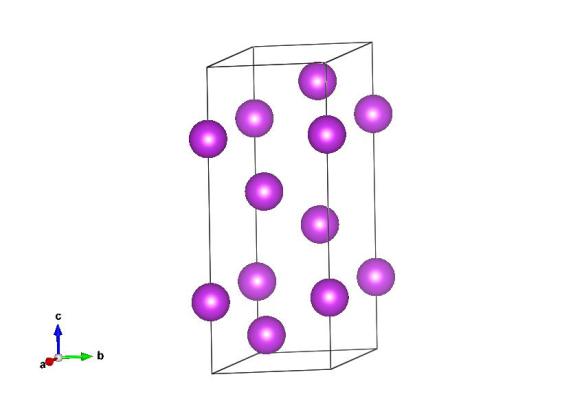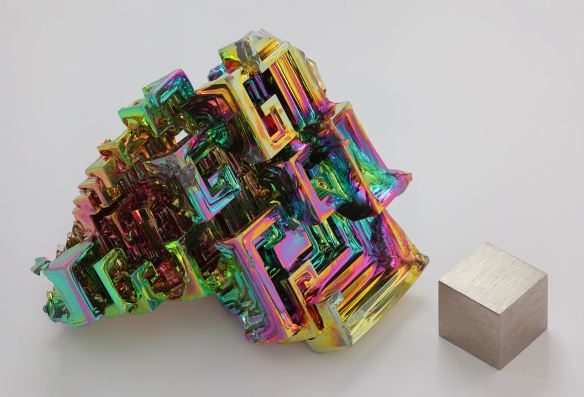Bi George, it's bismuth!
What does it look like?

Image generated by the VESTA (Visualisation for Electronic and STructural Analysis) software http://jp-minerals.org/vesta/en/
Why is bismuth our next crystal structure? Because bismuth crystals are just plain cool looking!
If you don't believe me, then check this one out:

(image courtesy of Wikipedia)
Bismuth is a commonly used metal, in part because of its low toxicity, and can be found in lots of everyday products like makeup and medications, including the aptly named Pepto-Bismol. Naturally, however, bismuth isn't bright pink, but light gray, like in the cube above. The rainbow sheen on the large crystal actually comes from a surface oxide layer that forms on the bismuth during crystal growth.
The crystal structure of bismuth is relatively simple, as is shown above. The bismuth structure can be described by a hexagonal unit cell where two of the three linear cell parameters are the same and two of the angles in the unit cell are 90° while the third is 120°. But this crystal structure isn't what causes such a distinctive type of crystal to form. This type of "staircase" like growth is called a hopper crystal. These types of crystals form because the outside of the crystal grows faster than the inside, so the large crystals never get "filled in". However, the growth of the inside portion of the crystal is still dictated by the crystal structure, which is how the "step" features form.
Since bismuth is a relatively safe and easy to obtain metal, you can actually make bismuth crystals at home in your kitchen (or garage if you happen to have a gas torch around). You can check out a video of stove-top bismuth crystals here.
Where did this structure come from?
The first determination of the structure of bismuth was reported in 1962 by P. Cucka and C.S. Barrnett. (http://onlinelibrary.wiley.com/doi/10.1107/S0365110X62002297/abstract) You can also find the structure at #5000215 in the Crystallography Open Database. (http://www.crystallography.net/5000215.html)






